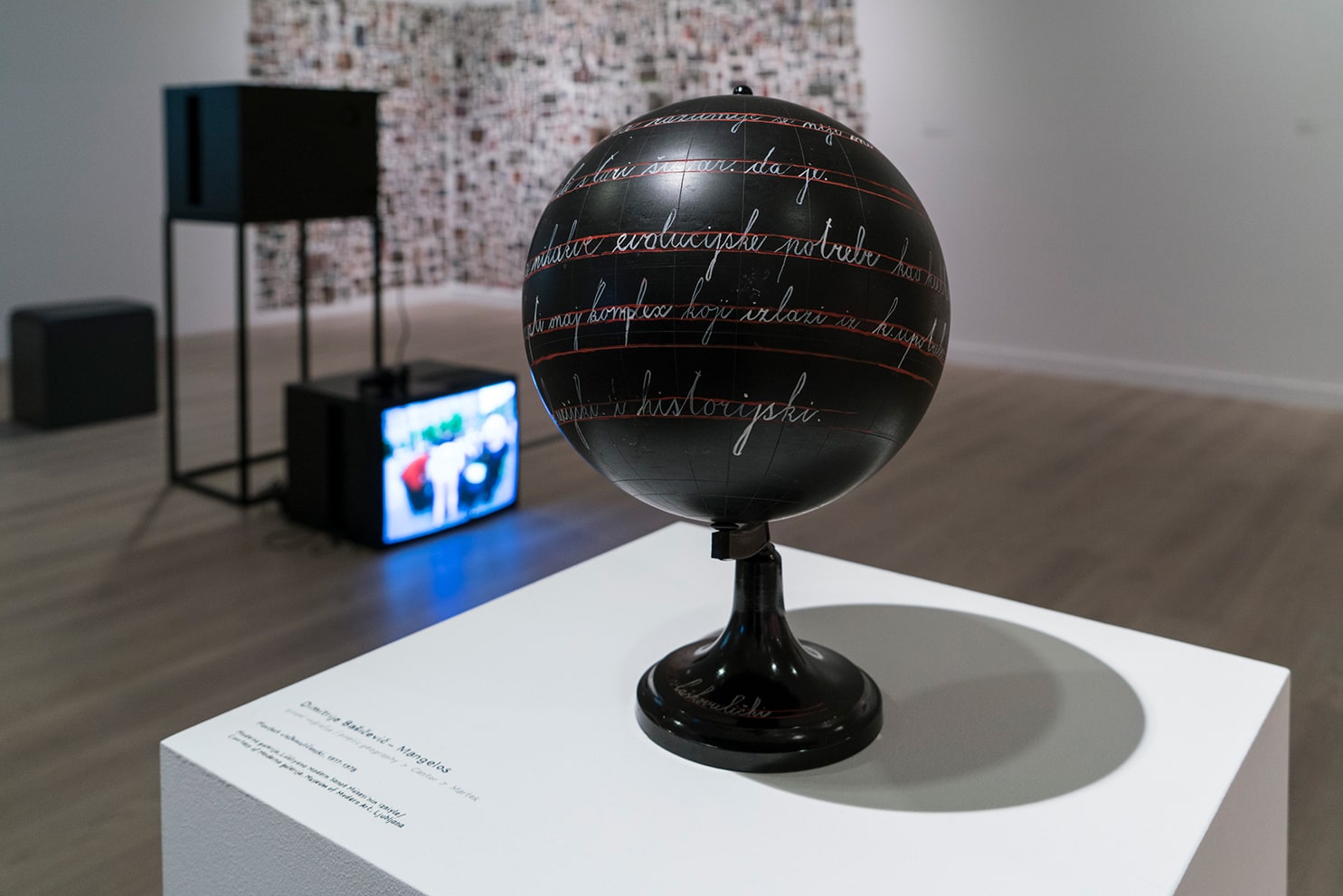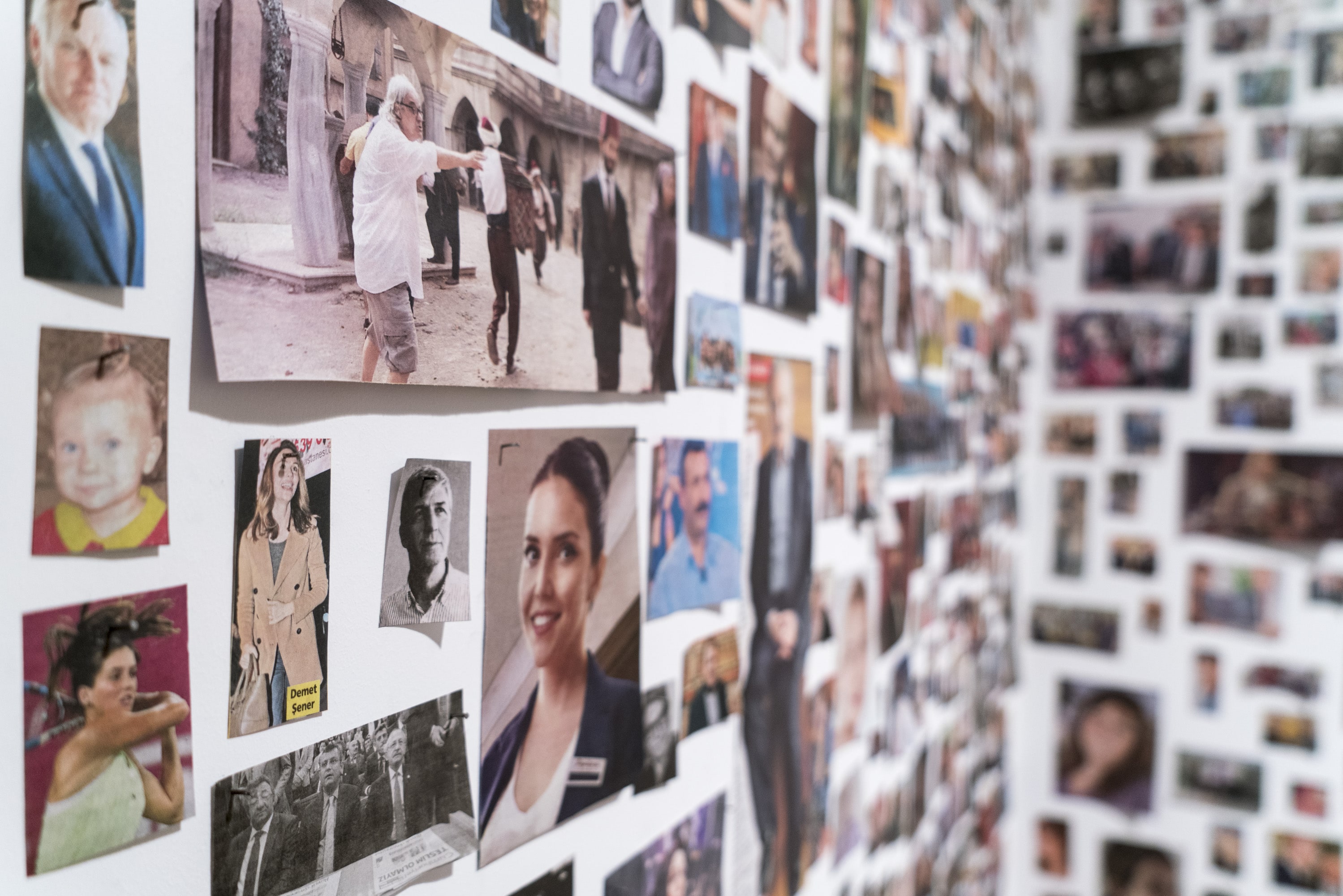09 January 2017
Pera Museum’s Cold Front from the Balkans exhibition curated by Ali Akay and Alenka Gregorič brings together contemporary artists from Albania, Bosnia and Herzegovina, Bulgaria, Croatia, Kosovo, Macedonia, Montenegro, Romania, Serbia and Slovenia.

The exhibition focuses on different generations of artists and art groups from the Balkan region. The exhibition avoids the usual unflattering political connotations the region’s name inevitably brings up but instead focuses on a natural phenomenon — the wind. The exhibition title refers to the well-known saying in Turkish: “Cold wind blowing from the Balkans” which conveys winter’s arrival and is most commonly used in television weather reports.
Following this very common idiom in Turkey, the exhibition brings together the artists who deal with their immediate surroundings, reacting and commenting on their social, political and cultural milieu, such as Maja Bajević, Braco Dimitrijević, Vadim Fishkin, IRWIN, Laibach, Mladen Miljanović, Ivan Moudov, OHO, Dan Perjovschi, Mladen Stilinović, Ulay, and Sislej Xhafa amongst others. In the selection of the striking works made in different mediums ranging from video to photography, drawing to installation; it is aimed to create a new dialog between the Balkan artists from different generations and to provide a new point of view for the spectator.

The exhibition consists of 6 sections. Throughout the exhibition, we will be sharing detailed information about the sections and the artists on our blog. The second post is about “Ideology”!
Ideology is an illusion pretending to show the “real” through a representation. All the same, it works. The ideological state apparatuses ensure that it works on a micro level. Schools and religious institutions regard us as subjects, but all they do is interpellate us. Being a subject means being called at aloud. Social practices determine our characteristics as well as the limits of these characteristics. The role of the social ideological apparatus to “normalize” our behavior and role in society has been clear in the twentieth century, from Durkheim to Althusser: We live in a social space where production in economic terms and discourses in legal and political terms have been overdetermined.

- silent revolutions
Revolutions have been fermented by revolts and erupted when people could no longer tolerate practices against them. Philosophers, however, have had doubts about the concept of revolution. From Locke to Spinoza, and from Kant to Deleuze and Foucault, revolutions are characterized as bloody, and therefore as actions to be shunned by thought. Marx, in contrast, pointed out the power of revolution and revolt—the latter is the psychic bodily and social powers emerging and becoming visible.
- personal(ized) revolutions
Personal revolutions are acts that creative individuals carry out on their own. Everyone has the capability of surpassing one’s existence. Fighting against one’s self requires fighting against social, scientific, artistic, and legal clichés. Creation involves going beyond old knowledge and has social utility. Personal revolution is the creative process itself. It is the process of creating a narrative that works parallel to the established rules of the society.

Our Cold Front from the Balkans exhibition focuses on different generations of artists and art groups from the Balkan region. Throughout the exhibition, we keep sharing detailed information about the artworks. Take a look at Mark Požlep’s “Stranger than Paradise” video installation. Also you can check our interview with the artist on our YouTube channel!
Tuesday - Saturday 10:00 - 19:00
Friday 10:00 - 22:00
Sunday 12:00 - 18:00
The museum is closed on Mondays.
On Wednesdays, the students can
visit the museum free of admission.
Full ticket: 300 TL
Discounted: 150 TL
Groups: 200 TL (minimum 10 people)